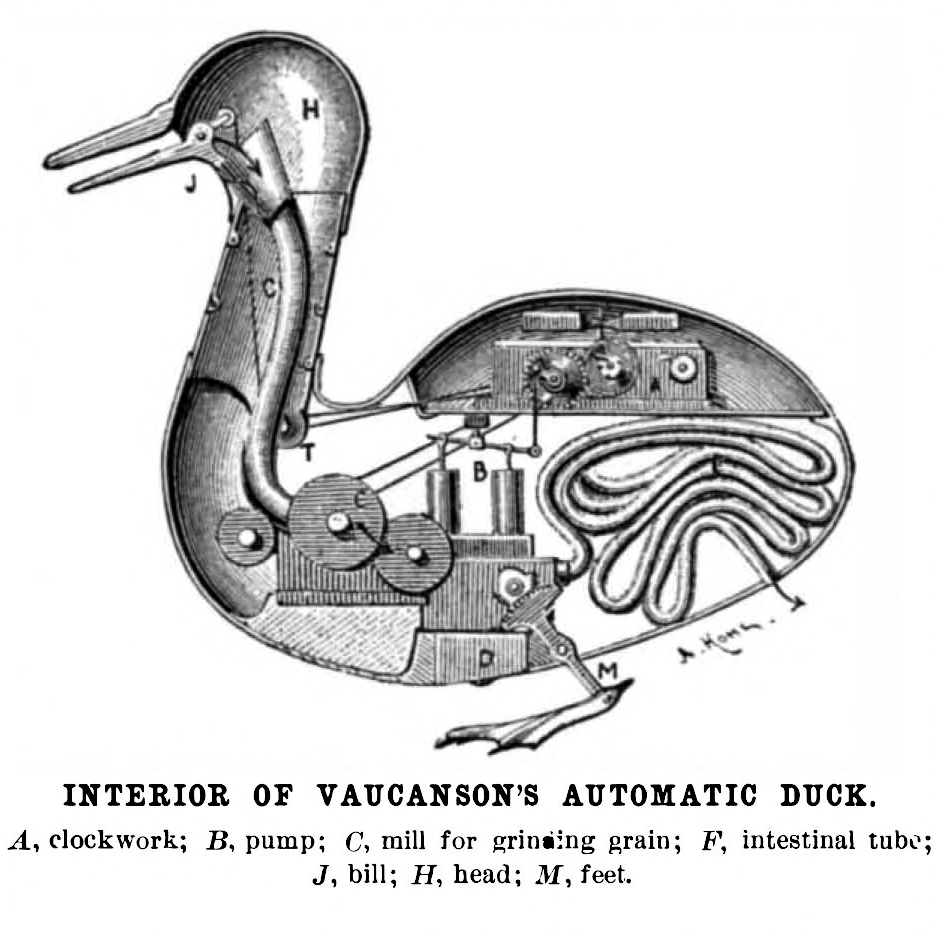 Neuroscience has hit the big time. Every day, popular newspapers, websites and blogs offer up a heady stew of brain-related self-help (neuro-snake oil?) and gee wiz science reporting (neuro-wow?). Some scientists and journalists — perhaps caught up in the neuro-fervor — throw caution to the wind, promising imminent brain-based answers to the kinds of questions that probably predate civilization itself: What is the nature of mind? Why do we feel the way we do? Does each person have a fundamental essence? How can we avoid pain and suffering, and discover joy, creativity, and interpersonal harmony?
Neuroscience has hit the big time. Every day, popular newspapers, websites and blogs offer up a heady stew of brain-related self-help (neuro-snake oil?) and gee wiz science reporting (neuro-wow?). Some scientists and journalists — perhaps caught up in the neuro-fervor — throw caution to the wind, promising imminent brain-based answers to the kinds of questions that probably predate civilization itself: What is the nature of mind? Why do we feel the way we do? Does each person have a fundamental essence? How can we avoid pain and suffering, and discover joy, creativity, and interpersonal harmony?
Videos on computational neuroscience – by me!
I haven’t been blogging much, and that is partly because I have been organizing weekly meetings devoted to computational neuroscience. Between January and July, my friends and I did a series on dynamical systems theory in neuroscience. I created a YouTube channel for the videos.
Here’s the playlist for the dynamical systems series:
This month we started talking about Stephen Grossberg’s new book, ‘Conscious Mind, Resonant Brain’. Grossberg set up the department where I did my PhD, and his ideas suffuse how I think about mind and brain. I’m uploading the videos as they happen. Here’ the playlist:
Substack, plus shifting to a new url
I’ve decided to consolidate my various blogs in one place: yohanjohn.com
I’ll probably still cross-post neuroscience-related entries here, but that will be my main online presence.
I’m also going to try out substack. For those who haven’t heard about it yet, it’s sort of like blogs+rss but you sign up by email and get posts delivered to your inbox.
Expect a magpie’s hoard of shiny bits from neuroscience, philosophy, history, music, and whatever else catches the light.
First post coming soon!
What might brain implants do to humanity?
I wrote this in February 2016, before I knew of Neuralink’s existence. It was in response to the following question:
Implants + Internet = ImplanTelepathy™!

Neural correlates of consciousness – how exactly can we find them?
This is a slightly edited version of an answer I wrote on Quora: What is the best way to understand consciousness?

This emoticon captures my attitude towards questions about consciousness:
¯\(°_o)/¯
Consciousness seems to be invisible to scientific methods. The only way to incorporate consciousness into science is to change the definition of science so it includes subjective experience. I am not really comfortable with doing this, because it waters down science to the point where it becomes indistinguishable from introspective philosophy. Science is useful because of what makes it different from philosophy: it makes predictions that can be tested objectively. Truly subjective experiences seem to be ruled out by definition.
My favorite way to think about consciousness is inspired by Indian philosophy, though the general idea crops up all over the place:
Consciousness is not a phenomenon: it is the precondition for the appearance of phenomena. The mind is not a thing to be observed, but the medium by which things are observed.
This is emphatically not a scientific statement, but that’s okay: science is only one of many ways to look at the universe.
So let’s examine the scientific approach to consciousness in detail!
Science does not disprove free will
Someone contacted me through Quora recently because they were having an existential crisis — it was stimulated by the ostensibly scientific notion that humans do not have free well.
Any theory that insists that we do not actually make choices is going to causes distress among many people who valorize academic thinking. Many hard-nosed metaphysicians simply don’t care about the mental well-being of the general public. I find this attitude simultaneously patronizing and irresponsible.
On the COVID-19 Crisis
Some tentative conclusions based on my reading of epidemiological models and qualitative reports:
1. The most effective strategy so far involves a combination of widespread testing, social distancing, elevated hygiene, and tech-enhanced contact tracing. If these steps are done well, lockdowns might be fully avoidable. This has been the strategy of Singapore, Taiwan, South Korea, and Hong Kong.
2. Many if not most countries simply do not have the resources for widespread testing yet, and may not have the political will for invasive social monitoring.
3. Given the situation, lockdowns should be understood as a way to buy time for manufacturers of testing kits, and for vaccine and treatment researchers. For both economic and psychological reasons, lockdowns cannot continue indefinitely.
4. Vast sections of the world may have to practice periodic lockdowns, until either (i) governments are ready and willing to enforce widespread testing *and* contact tracing, or (ii) a vaccine or effective treatment becomes widespread. Privacy concerns and economic concerns will have to engage in a direct debate if this stage is reached. Also, lifting a lockdown prematurely can cause a bounce-back of the infection rate.
5. A lockdown does not necessitate economic collapse or starvation: countries, provinces, and communities can do a great deal to ensure money and food reach people. The policies enacted in the UK and Denmark guarantee 75-80% of wages, and preserve crucial employer-employee relationships, enabling a speedier return to employment. And even a poor country like India always has vast amounts of foodgrain in storage (which often goes to rot). International cooperation is needed to ensure distribution and prevent wastage. Protection of farmers is also essential. Cash crop growers will be particularly badly hit by the almost inevitable collapse of demand for non-essential products.
6. Some form of basic income is essential for workers in what is known as the ‘gig economy’ in advanced countries, and the ‘unorganized sector’ in poor countries. An additional challenge in poor countries is that many people still do not have bank accounts.
7. Given that the economic consequences of the shutdowns are already being felt, there is little to be gained for the time being in speculating about whether governments have overreacted in the recent past. Governments clearly underreacted in January and February, but there is nothing we can do about that now. Having convinced ourselves of this, we might ease our anxieties a little by leaving detailed analysis of should-haves, would-haves, could-haves and might-haves for the post-crisis reckoning, and focus on what is in front of us. Less what-ifs and more what-nows.
8. The very concept of over- and under-reaction is too blunt an instrument when planning actions in the present. Each region and polity faces unique challenges, so there cannot be a one-size-fits-fall response to the pandemic. Instead of a one-dimensional ‘scale of reaction’, the key for the present is the alignment between responses and the specific circumstances they are responding to.
9. The crisis now is not just the coronavirus, but a causal web that includes our prior reactions to it. This is inflammation at the level of the body politic.
Calmly preparing for the coronavirus outbreak is the rational thing to do
 I wrote this on Facebook, but thought it might be useful to share it more widely. This is not a neuroscience post.
I wrote this on Facebook, but thought it might be useful to share it more widely. This is not a neuroscience post.
Last weekend is when I started to take the coronavirus issue seriously. ‘Seriousness’ doesn’t imply panic, but it does imply taking the time to read about what is happening and to find out how each of us can act to mitigate the crisis.
The death rate is hard to assess, but it seems likely to hover between 1 and 3 percent of *reported cases* for now. That’s a lot more than seasonal flu, which has a mortality rate of around 0.1%. With early testing and good medical care, this rate can come down. But sadly in the US there are institutional pressures that prevent optimal responses, despite plenty of money and human capital.
Increased vigilance when it comes to hygiene is the first step. Wash your hands. Use sanitizer (if you can get some). Avoid touching your face (this one is very hard for me). If possible, work from home. Masks are not necessary for the general public, as far as I can tell, and buying them is already creating shortages for the medical community. We really don’t want large numbers of doctors and nurses to get sick.
Preparing for a voluntary quarantine period also makes sense. Have stocks of food and prescription medications (if any) to last you around two weeks or so. If this becomes expensive for you, try to stock up gradually.
On the neuroscience of creativity
 I was asked the following question on Quora recently:
I was asked the following question on Quora recently:
Thinking [1] [2] is very poorly understood, but broadly speaking in seems to involve the prefrontal cortex (PFC), with a special role for the dorsolateral PFC. Other important areas include the hippocampus and parietal cortex. Ultimately, thinking involves many brain regions, and cannot be localized to one place. Thinking is a distributed process that can incorporate many different parts of the brain. And the specific content of the thoughts will influence which brain areas are involved. If you are thinking about images, visual areas will be involved. If you are thinking about movement, motor areas will be involved.
In my opinion, the distinction between “linear” and “creative” thinking is somewhat vague. At this point, the most important thing to note is that the idea that the “left brain is rational/logical and the right brain is creative/artistic/emotional” is totally wrong [3] . Both hemispheres contribute to logic as well as creativity. Moreover, the use of logic can itself be a creative activity.
Is thinking conscious or unconscious?
 There are two ways to define thinking: each leads to a different answer to the question of whether thinking is conscious or not.
There are two ways to define thinking: each leads to a different answer to the question of whether thinking is conscious or not.
- Thinking as a subjective experience. If someone asks you what you are thinking about, you can introspect, and describe your thought process. You can also say that you weren’t really thinking at all.
- Thinking as the cause of ideas and thoughts. If you discover a thought, then you can infer that the process that led up to the thought was a form of thinking, even if there was no subjective experience associated with the process.
We can test our preference for definition 1 or definition 2 by considering an example.
Sherlock Holmes was a good chemist. When he found himself stuck while attempting to solve a mystery, he would sometimes distract himself by doing a chemistry experiment. At the end of such an experiment, he often found that a solution simply popped into his head.
Is the ‘resolution’ of the human eye ‘infinite’?
No measurable physical quantity is ever infinite. In other words, only theoretical concepts can be definitively labeled as infinite. But that is perhaps an epistemological claim that is unnecessary here. So let’s dive into the nitty-gritty of how visual ‘resolution’ is actually measured. As we shall see, the number of light sensitive cells in the retina does not tell us what the ‘resolution’ of the visual system as a whole is. In some circumstances our visual ‘resolution’ exceeds that of the eye considered in isolation.
Visual acuity [1] is the sharpness with which we can distinguish patterns of light on the retina of the eye. This depends on the exact location of the light falling on the retina.

